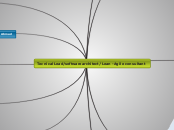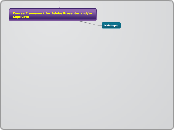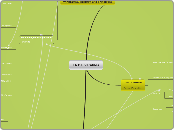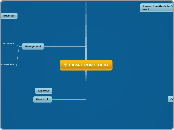HCI
HCI involves the design, implementation and evaluation of interactive computer-based systems
The focus is on the user, their tasks and their environment
The key goal is improving the usability of the system
HCI is about
Understanding people, their tasks and environment
Developing appropriate interfaces and interaction techniques
Evaluating and comparing interfaces
Developing methodologies for designing interfaces
Usability
Metrics - Quantitative Measures
Guidelines and Principles
Guidelines and Principles provide the designer with a framework to provide support for the user in achieving the above points
Definition
ISO 9241 Standards
The effectiveness, efficiency and satisfaction with which specified users achieve specified goals in particular environments.
effectiveness: the accuracy and completeness with which specified users can achieve specified goals in particular environments
efficiency: the resources expended in relation to the accuracy and completeness of goals achieved
satisfaction: the comfort and acceptability of the work system to its users and other people affected by its use
Acceptability
Political – is the design politically acceptable? Do people trust it? Do people see it as enhancing their abilities or are they threatened by it?
Convenience – Level of awkwardness, change in behaviour
Cultural and Social habits – Disturb people, human contact – reassurance.
Usefulness – In the context of everyday living
Economic – value for money, change the way people work
Engagement (eg. for game interfaces)
Identity – a sense of authenticity
Adaptivity – personalisation – responsiveness to changing skills
Narrative – telling a good story
Immersion – quality of design
Flow – sense of smooth movement
Usability is...
Helping people access, learn and remember the system …
Visibility
Consistency
Familiarity
Affordances
Giving them the sense of being in control, knowing what to do and how to do it …
Navigation
Control-Dialogue initiative, Mapping
Feedback
Safely and securely …
Recovery
Constraints
In a way that suits them …
Flexibility
Style
Conviviality
Evaluation
Implementation Frameworks
Techniques
User Studies
Analytical Evaluation
Considerations
Choosing an Evaluation Strategy
User-Centred Design
In an iterative UCD process
Designers move rapidly between requirements, conceptual design, physical design, evaluation, prototyping and envisionment
Evaluation is central to the process.
Distinguishing conceptual and physical design is very important to ensure a good allocation of function between people and technologies
Prototyping and envisioning ideas is crucial to understanding requirements and design ideas
Envisionment
Envisionment is concerned with finding appropriate media in which to render design ideas.
Designs need to be visualized
to help designers clarify their own ideas
to enable people to evaluate them.
The medium needs to be appropriate for
the stage of the process,
the audience,
the resources available and the questions that the prototype is helping to answer.
Forms of Envisionment
Sketches and Snapshots
Storyboards
Mood boards
Navigation maps
Mind maps
Scenarios
Prototyping
Requirements Analysis
Types of Requirements
Functional
Non-Functional
Data
Type , Volatility, size/amount, persistence, accuracy
Environment
Physical
Social – collaboration and coordination,
Organizational – user support, training, validation, resources, management
User
abilities and skills, frequency of use, novice, casual or expert
Usability
learnability, efficiency, effectiveness, safety, memorability
Sources of Information
Documentation
Observation
Interviews
Focus Groups
Questionnaires
Similar Products
Cultural Probes
Creative Alternatives









